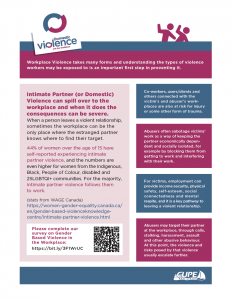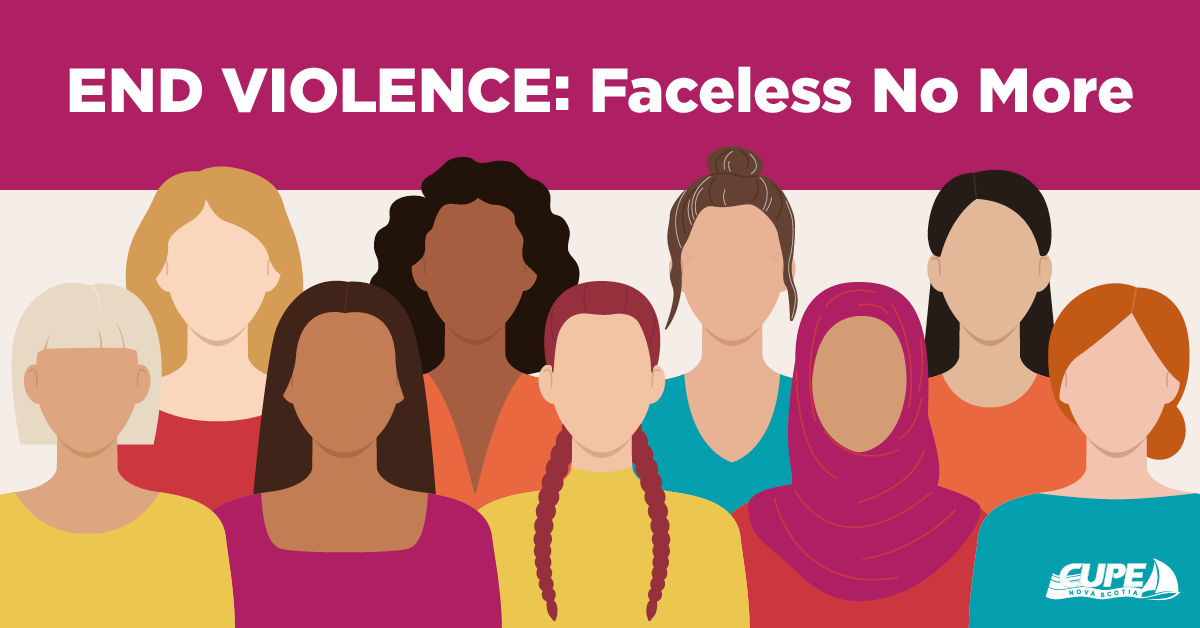Download a copy of this fact sheet on intimate partner (or domestic) violence.
Intimate partner (or domestic) violence can spill over to the workplace and when it does the consequences can be severe. When a person leaves a violent relationship, sometimes the workplace can be the only place where the estranged partner knows where to find their target.
44% of women over the age of 15 have self-reported experiencing intimate partner violence, and the numbers are even higher for women from the Indigenous, Black, People of Colour, disabled and 2SLGBTQI+ communities.* For the majority, intimate partner violence follows them to work.
 Co-workers, users/clients and others connected with the victim’s and abuser’s workplaces are also at risk for injury or some other form of trauma.
Co-workers, users/clients and others connected with the victim’s and abuser’s workplaces are also at risk for injury or some other form of trauma.
Abusers often sabotage victims’ work as a way of keeping the partner economically dependent and socially isolated, for example by blocking them from getting to work and interfering with their work.
For victims, employment can provide income security, physical safety, self-esteem, social connectedness and mental respite, and it is a key pathway to leaving a violent relationship.
Abusers may target their partner. at the workplace, through calls, stalking, harassment, assault and other abusive behaviour. At this point, the violence and risks posed by that violence usually escalate further.
*Stats from WAGE Canada: https://women-gender-equality.canada.ca/en/gender-based-violenceknowledgecentre/intimate-partner-violence.html

